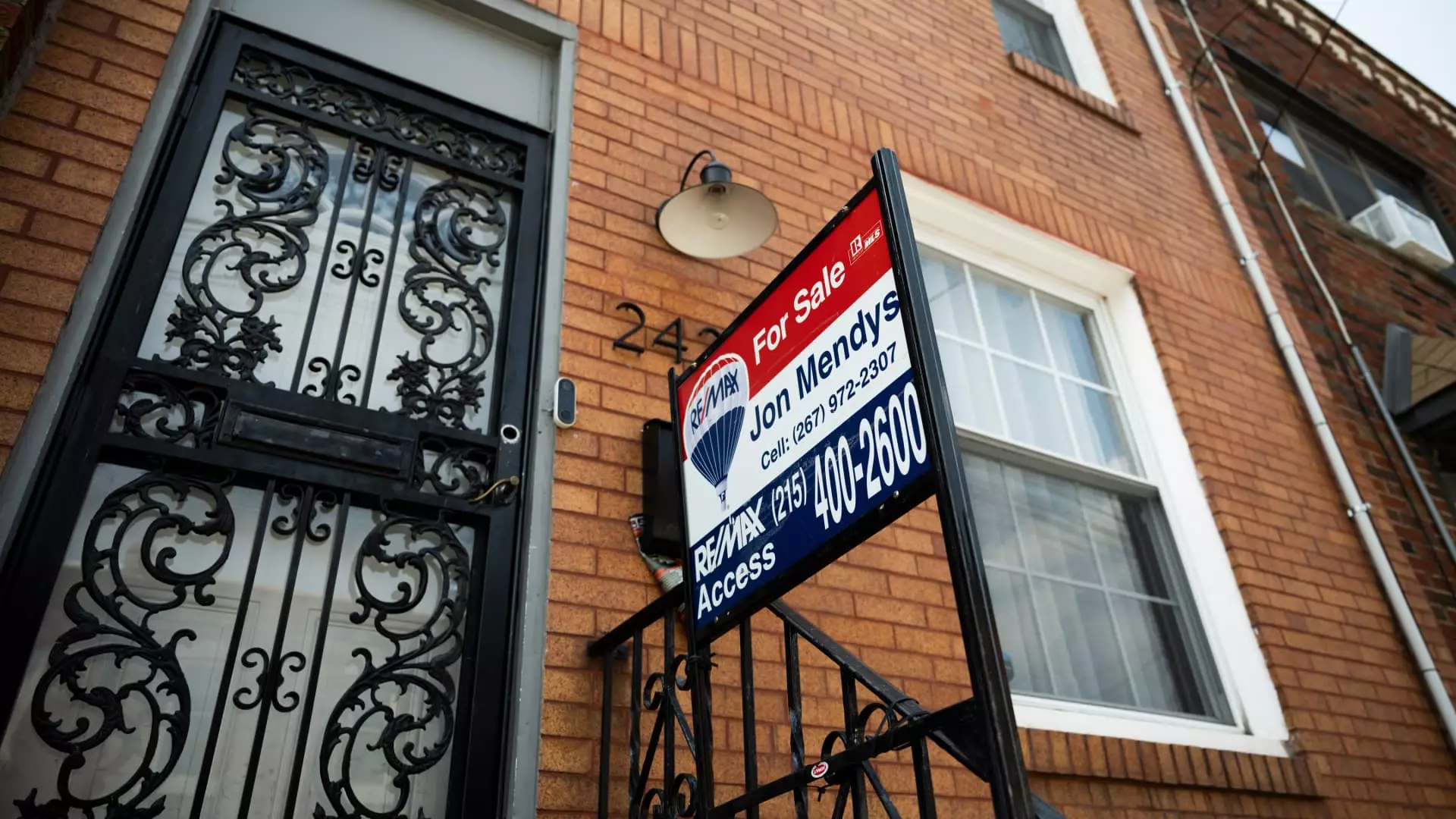The U.S. housing market has become a focal point of scrutiny, reflecting a blend of persistent challenges that are reshaping the landscape for potential homebuyers. Amid rising mortgage rates and stagnant property prices, both buyers and realtors find themselves navigating an increasingly complicated environment.
A recent report from the National Association of Realtors (NAR) disclosed a troubling decline in sales of previously owned homes, which fell by 4.9% in January compared to December, reaching an annualized rate of 4.08 million units. This downturn surpassed analyst expectations of a 2.6% decline, marking a detrimental shift for prospective buyers who are already facing a tough market. Although sales showed some resilience—a 2% uptick compared to January 2024—the overall figures are hovering around 15-year lows, indicating broader, systemic challenges.
The data reveals that the January sales figures were largely influenced by contracts that likely originated during months when mortgage rates dipped slightly from over 7% to the 6% range. Lawrence Yun, NAR’s chief economist, highlights the paradox of high mortgage rates persisting despite the Federal Reserve’s attempts to cut interest rates in the short term. Consequently, the ongoing difficult landscape around housing affordability is heightened by aggressive pricing not yielding to market pressures.
One of the noteworthy developments in the market is the increase in home listings. By the end of January, inventory stood at 1.18 million homes, a 3.5% rise from December and up 17% from the previous year. Despite this increase in available units, the supply remains at just a 3.5-month level, starkly below the six-month equilibrium typically associated with a balanced market between buyers and sellers. The average duration for homes on the market extended to 41 days, marking the slowest movement since before the pandemic, thus reflecting a cautious buyer sentiment.
Tight supply continues to exert upward pressure on prices. The median home price in January escalated to $396,900, representing a 4.8% increase from the previous year, cementing its position as the highest median price for January on record. Notably, all four regions in the U.S. tracked by the NAR indicated price growth, signaling a widespread challenge in affordability.
The marketplace conditions suggest that the dual factors of increased inventory alongside declining mortgage rates are crucial prerequisites for many consumers contemplating a move. Yun emphasizes that the introduction of additional housing stock would empower well-qualified buyers, although many still grapple with financial constraints.
All-cash transactions constituted 29% of home sales, marking a historically high level that has nonetheless seen a slight decrease from this time last year. First-time buyers, who made up about 28% of sales, find themselves at a stark disadvantage compared to historical norms that often saw this demographic represent closer to 40% of the market. The discrepancy in performance among various price tiers is striking; sales of homes within the $100,000 to $250,000 bracket diminished by about 1.2%, while luxury sales exceeding $1 million surged nearly 27% year-over-year.
Realtors are observing a disconnect between inventory increases and buyer engagement, with January revealing a lackluster turnout. As Yun poignantly notes, while listings are numerous, the actual number of prospective buyers remains tepid. The implications are clear: navigating the current housing market requires a strategy that acknowledges not only the financial implications associated with buying but also the psychological barriers presented by ongoing uncertainty and elevated costs.
In summation, the U.S. housing market faces formidable challenges largely driven by high mortgage rates and escalating home prices. Until the clashing dynamics of supply and demand find equilibrium, both buyers and sellers must adopt a cautious approach, leveraging knowledge and market insights to steer through this turbulent terrain. The pressing need for increased affordability and more accessible inventory remains at the forefront of discussions among industry experts and potential homebuyers alike, indicating that lasting solutions are essential for reviving the market’s vitality.

